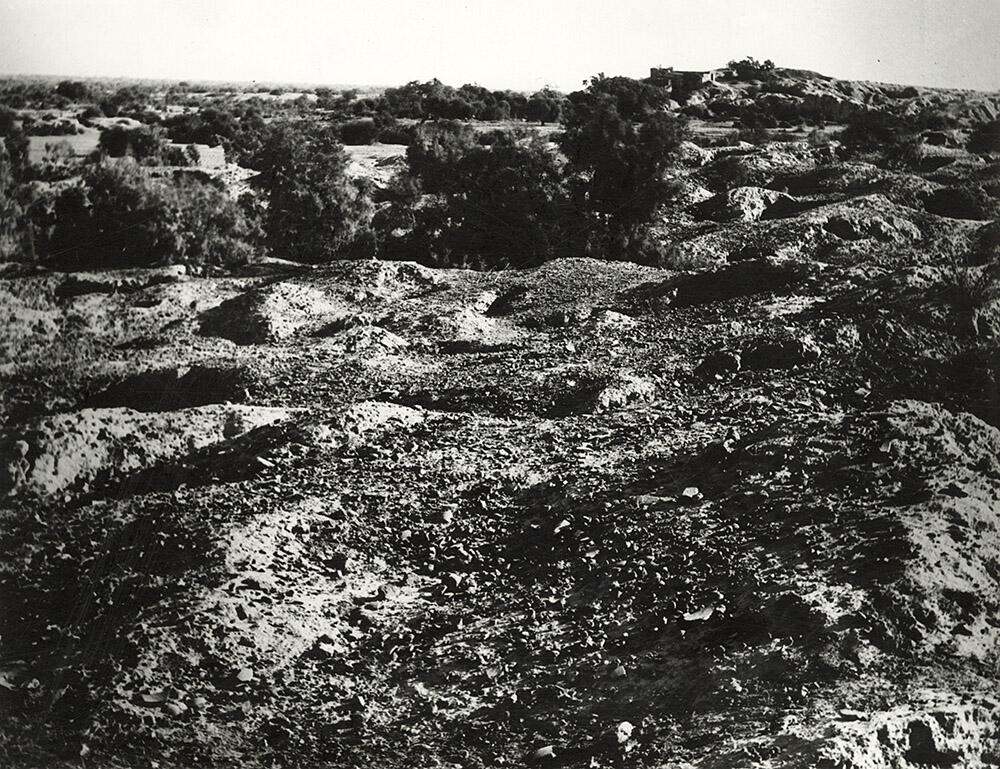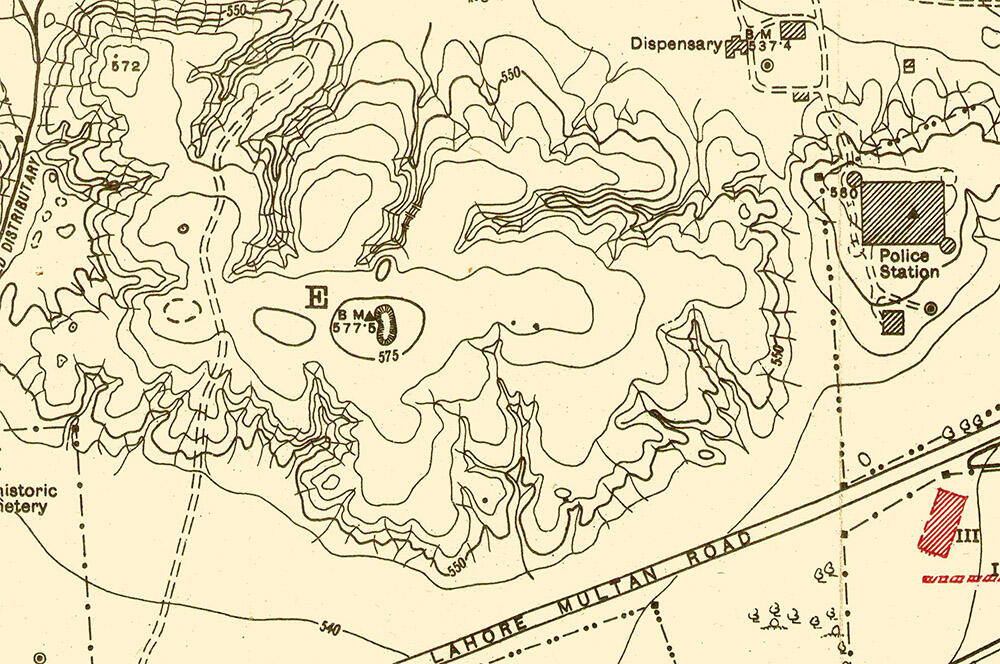In addition to the excavations at Mound F and Mound AB, Daya Ram Sahni had this photograph taken in 1921 of Mound E [Map, Image 2 above, although this is not considered very accurate today]. Sahni noted in another area how extensively the site had been robbed of its bricks, in this case by villagers, and in the previous century, as Major-General Cunningham noted, by railway contractors.
The areas excavated on Mound F and Mound AB during the 1921 excavations are circled in the Map [Image 3, above]. The net impression of Sahni's first six weeks at Harappa in January-February 1921 were promising but not overwhelmingly so. Lahiri summarizes:
"On balance, most readers of this report [Sani's typewritten report to Marshall, 1921] are likely to get the feeling that Sahni's first season of excavations had turned out to be a combination of thwarted expectations and an unusual juxtaposition of artefacts. There were hardly any structural ruins in the excavated mounds which had survived intact; yet it was now clear that the enigmatic seals belonged to the time when Harappa was a brick-built city. But Harappa, unlike other cities of ancient India, had not revealed images or coins ormetal technology (copper-based tools would be found later). Instead, its implements were made of stone, while its bangles, beads, and figural representations were almost entirely of clay.
"For the moment, Sahni's excavations at Harappa's depleted ruins had succeeded in establishing the existence of a city older than any ancient city hitherto known to exist within the Indian subcontinent. The momentous nature of this knowledge remained, for the moment, only tentatively formed even within the minds of the people who possessed this knowledge."
- Nayanjot Lahiri, Finding Forgotten Cities, p. 221, 223.
John Marshall was one of those people who was still expecting more. As he wrote in his Annual Report for 1920-21:
"Thus, although the resulte attained so far are undoubtedly meagre, they are important in that, according to Mr. Sahni, they prove that the Harappa seals and their curious pictographic legends belong to the pre-Mauryan epoch; and it ts to be remembered that the digging to date has pierced only the top most levels. Fifty feet of depth remain to be explored, and it is already evident that the examination of these lower strata is likely to lead to valuable discoveries. Two noticeable features of the site so far are, (a) the absence of cult objects (unless the figure just described bore this nature originally, which seems improbable), and (b) the uniform size of the bricks 11" 5 1/2" x 2 1/2"to 3". The advantages of this size for bonding are obvious, but so far as has been observed, this convenient proportion of two widths to the length has not yet been met with at any other ancient site in India."
- John Marshall, Annual Report of the Director-General of Archaeology in India, 1920-21, p. 17.
"This is a view across the northwestern edge of Mound E towards the tomb of Baba Noor Shah Wali on the northeastern corner of Mound AB. Excavations of Mound E by the HARP uncovered a similar sequence of occupation beginning from the Early Harappa Phase to the Late Harappa Phase. For Mound E excavations see this contemporary view and upper slope excavations."
- Jonathan Mark Kenoyer, 2021.
[Appendix D] 2748 Mound E showing the effect of tunnelling carried out by villagers for bricks.
[Original caption] 2748 Harappa Mound E, showing the effect of tunnelling by villagers for Bricks.




